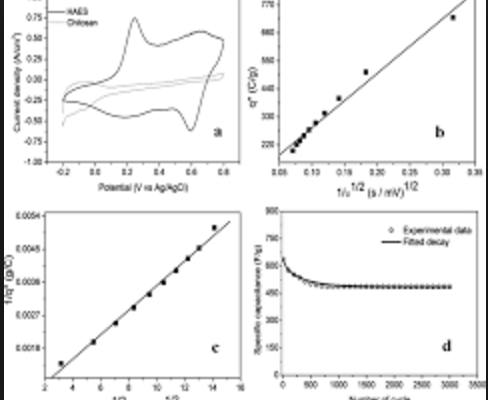 Yahya A. Ismail, Jonho Chang, Su Ryon Shin, Rajaram S. Mane, Sung-Hwan Han, Seon Jeong Kim
Yahya A. Ismail, Jonho Chang, Su Ryon Shin, Rajaram S. Mane, Sung-Hwan Han, Seon Jeong Kim
Center for Bio-Artificial Muscle and Department of Biomedical Engineering, Hanyang University, Seoul, Korea
*Corresponding author.E-mail: sjk@hanyang.ac.kr..
원문 링크 : http://seonjeongkim.cafe24.com/link
Abstract
Flexible, controllable, and stable electrochemical supercapacitors serving as actuators at low operating voltage combining the advantages of the high power of the dielectric capacitors and the high specific energy of rechargeable batteries are important in artificial muscle technology, hybrid electric vehicles, and in short-term power sources for mobile electronic devices [ Baughman , Science , 300 , 268 (2003) ; Winter and Brodd , Chem. Rev. (Washington, D.C.) , 104 , 4245 (2004) ; Ebron , et al. , Science , 311 , 1580 (2006) ]. High capacitance, a surprising 99% inner charge contribution and actuation in the hydrogel-assisted actuatable electrochemical supercapacitor (HAES) microfiber fabricated through wet spinning of a chitosan solution, followed by the in situ chemical polymerization of aniline was made possible through the perfect utilization of the large surface area provided by the nanostructured polyaniline grown inside as well as on the surface of the fiber. The HAES electrodes with an actuation strain of 0.33% showed 703F∕g specific capacitance in 1M methane sulfonic acid, and more than 3000cycles durability. The change in impedance as well as capacitance was achieved by the controlled strain as a function of applied stress, which can establish a direct relationship between the actuation strain and specific capacitance of electrochemical supercapacitors.